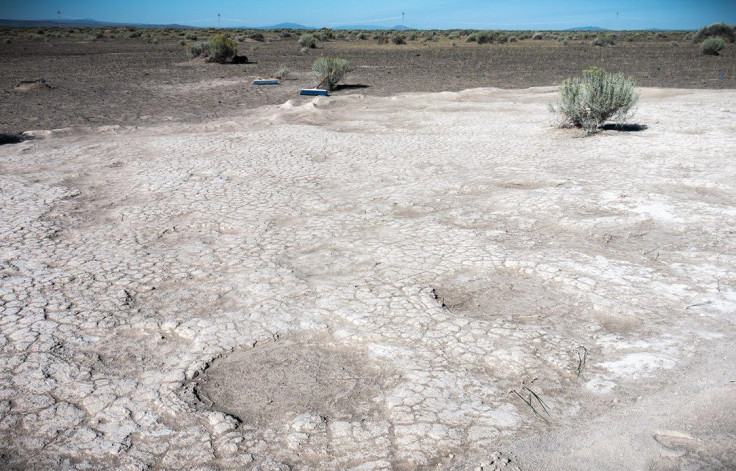Tracks On Ancient Mammoth Trail Show How Extinct Giants Cared For Family

Scientists have found an ancient mammoth trail where the tracks show two small animals were caring for an injured adult as they walked together across the land.
The trail of fossilized mammoth tracks is in central Oregon and over a stretch of about 65 feet, researchers found evidence that an adult mammoth was limping on its left side and two young, non-injured mammoths were backtracking out of concern for their comrade. According to a study in the journal Palaeogeography, Palaeoclimatology, Palaeoecology, the more than 100 tracks date back to about 43,000 years ago. They belong to the Columbian mammoth, a relative of the more famous and smaller woolly mammoth.
Columbian mammoths were about 14 feet tall at their shoulders, weighed roughly 20,000 pounds and had tusks that were up to 16 feet long. The mammoths, which were short on hair compared to the thick-coated woolly mammoth, roamed a large area, going as far north as Canada and as far south as Nicaragua.
The fossilized tracks from the Pleistocene era that the scientists studied in Oregon included three adults other than the injured party, as well as a baby and another young mammoth, “all heading generally west,” the paper says.
“This trackway includes a limping female attended by concerned juveniles,” according to the authors, who came to their conclusion based on the female making deeper foot impressions on one side — indicating a leaning stance — and the smaller footprints overriding their progress, as they moved toward the limping adult and then back again.
Newly published study identifies & analyzes fossilized Columbian mammoth trackway on #publiclands at Fossil Lake, #Oregon. Story & photos by @gregshine at: https://t.co/eogoo5RbER #paleontology @UO_MNCH pic.twitter.com/ABPAIrLd7q
The impressions were made in a basin of volcanic soil at a location called Fossil Lake.
“These juveniles may have been interacting with a limping adult female, returning to her repeatedly throughout the journey, possibly out of concern for her slow progress,” lead study author Greg Retallack said in a statement from the University of Oregon. “Such behavior has been observed with wounded adults in modern, matriarchal herds of African elephants.”
Modern elephants are related to the extinct mammoths.
“Tracks sometimes tell more about ancient creatures than their bones, particularly when it comes to their behavior,” Retallack said. “It’s amazing to see this kind of interaction preserved in the fossil record.”
© Copyright IBTimes 2025. All rights reserved.





















